Last Updated on April 11, 2021
Amidst the blinding white lay a clump of bones, propped up more inelegantly than it ever had been inside of a human frame, ages ago. Just how it came to pass that it still lay there in the fresh snow in front of a troop of panting but relieved trekkers who braved the cold, the distance, the altitude and the reputation of a mysterious lake to stand and stare at it, is the stuff that great adventure trips are made of. And that is what Roopkund lake trek is all about.
Months of preparation and expectation, the bone-chilling weather, the difficult mountain, the 4800 m (16000 ft) summit, the 53 km trek over 6 days, the best guides from Trek the Himalayas, the wonderful company (of course!) and something that no other trek can promise – the unsolved mystery of untold deaths and the hundreds of ancient human skeletons that adorn the rims and bottom of a hidden glacial lake in the high Himalayas.
But where is Roopkund lake?
Located in the Nanda Devi National Park in the Gharwal Himalayas, Uttarakhand, the glacial Roopkund sits glistening at an altitude of 4800 m. Surrounded by a breathtaking landscape of snow-capped mountain ranges including the mighty Trishul, Nanda Ghunti, and Chaukhamba, this mystery lake remains frozen for the major part of the year and lures both trekkers and pilgrims alike.
And what makes the Roopkund lake trek one of the most popular treks in India?
Roopkund lake trek is a great trek to do. It has everything going for it – the trek towards this mystifying lake takes you through some idyllic villages, rhododendron, pine and dense oak forests before exposing you to the majestic panorama of the vast bugyals (alpine meadows) spread under the misty maze of snow-covered mountains and an adrenaline kick. And the stunning campsites on this trek allow you to experience nature at its best.
The absolute thrill, adventure, and beauty that awaits you on the Roopkund lake trek has to be experienced.
The whole area is coined as sacred by the locals. The popular and challenging Nanda Devi Jat Yathra is held once every 12 years from Nauti, near Karanprayag to Homkund near Roopkund. The pilgrimage is in honour of Mata Nanda Devi and she is taken in a grand procession to her husband, Lord Shiva’s abode by the villagers.
The magic and mystery that engulfs you on this trek emanate from the sightings of the remains of the human and horse skeletons found at the bottom of the lake and around it.
How did the skeletons get here?
The hundreds of human bones scattered within and around the lake were discovered way back in 1942 by a British park ranger. All the bones showed similar blows – to the head and shoulders, short deep cracks on the skull and shoulder bones as if the blows had come from directly above. They belong to both men and women, mostly young adults.
DNA evidence indicated that there were three distinct groups of people. However, there have been multiple proposals to explain the origins of these skeletons.
So was Roopkund a high altitude battlefield? Could it have been an avalanche, a hailstorm, an epidemic or a suicide ritual performed near the lake? Or did the skeletons belong to pilgrims heading through the valley with the help of the locals? Or the remains of a group of merchants who were caught in a storm?
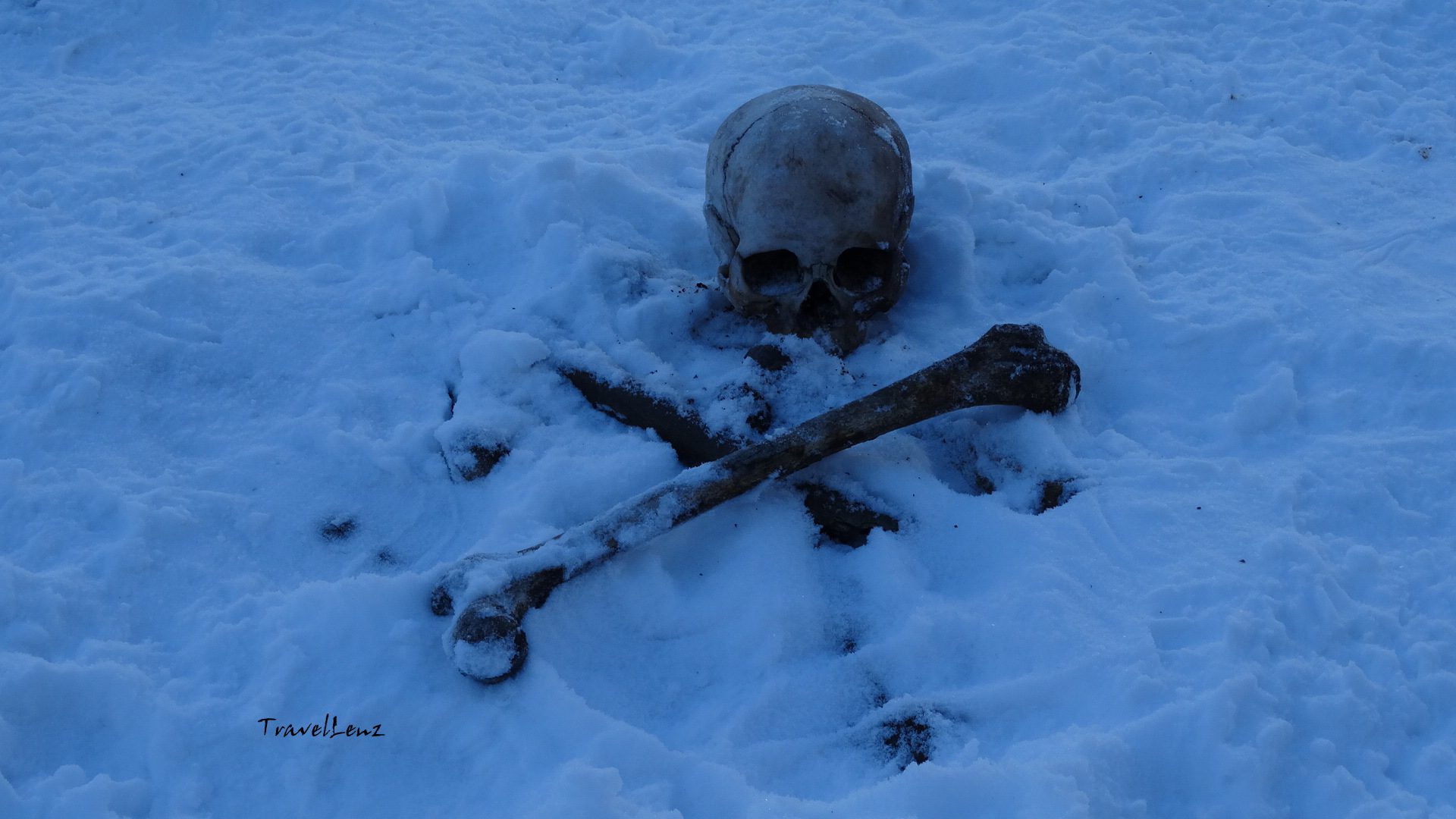 According to a local legend, the King of Kanauj, along with his wife and many attendants went on a pilgrimage to Nanda Devi. But the king brought dancers and other luxuries on the trek, momentarily forgot about the pilgrimage, causing Nanda Devi to conjure a terrible hailstorm killing the entire party.
According to a local legend, the King of Kanauj, along with his wife and many attendants went on a pilgrimage to Nanda Devi. But the king brought dancers and other luxuries on the trek, momentarily forgot about the pilgrimage, causing Nanda Devi to conjure a terrible hailstorm killing the entire party.
DNA analysis and other studies like radiocarbon dating and bone analysis found that the Roopkund skeletons belonged to three genetically distinct groups who perished on these snowy flanks across a period of 1000 years refuting the previous suggestion that the skeletons were deposited in a single catastrophic event.
How difficult is the Roopkund trek?
Treks in the Himalayas can be strenuous and if you are not prepared enough, you will be left huffing and puffing on a trail that passes through one of the most beautiful locations. The difficulty level of the Roopkund trek falls in the moderate to difficult category.
There are several steep descents and ascents over rocky trails and zig-zag snowy paths, particularly on the summit day.
Moreover, this is a high altitude trek; the maximum height gained is 4800 m (15500 ft) for Roopkund and 5000 m (16200 ft) for Junargali. Any height above 10000 ft is likely to affect trekkers with Acute Mountain Sickness (AMS). At higher altitudes, the air gets thinner leading to a decreased amounts of oxygen, which may cause slight inconvenience for some trekkers. It could affect trekkers in different ways, ranging from harmless headaches to feeling weak to nauseous sensations to losing appetite to graver situations like fluid accumulation in your brain.
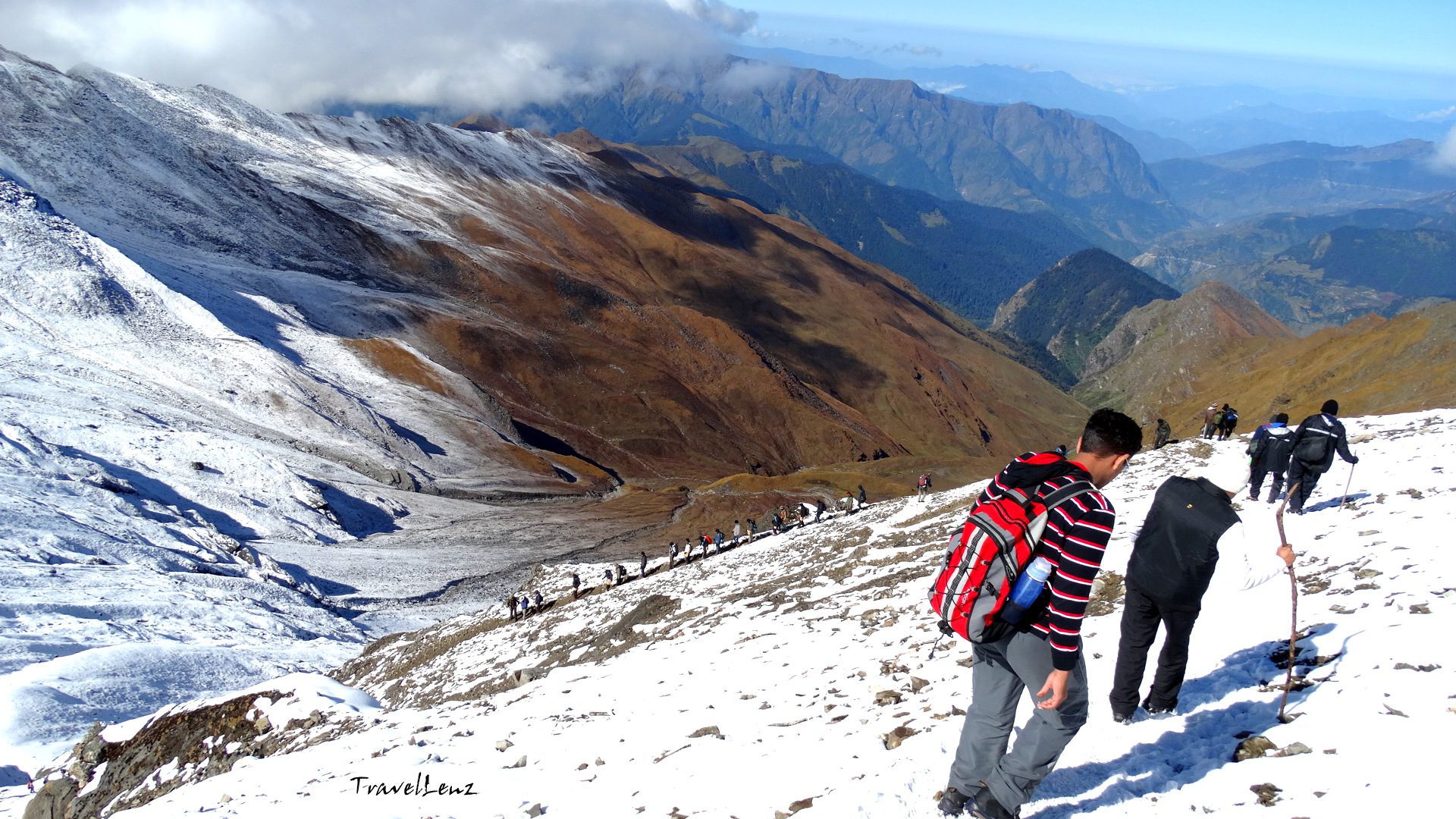 Most trek companies advise you to go on a preventive course of Diamox, a medicine for AMS. Some even suggest you start the course from the plains itself and some think it may cause more harm than good. It is always better to be aware of the symptoms and inform your guides.
Most trek companies advise you to go on a preventive course of Diamox, a medicine for AMS. Some even suggest you start the course from the plains itself and some think it may cause more harm than good. It is always better to be aware of the symptoms and inform your guides.
However, we did not take Diamox and were not affected much.
How we prepared for Roopkund Trek
You need to prepare your body to bear the stress of 6-7 hours of long hikes on a high altitude terrain. Altitude sickness can hit anyone, but if you are better prepared for the trek, your lungs are better equipped to work harder even at higher altitudes.
Being beginners, we started working out two months prior to the trek. We started off by brisk walking with light jogging for 3 km in 40 min, five days a week. Our final target was to jog for 5 km in about 35-40 minutes which we could do before embarking on the trek.
What’s the best time to do Roopkund trek?
This trek can be done during two seasons:
May-June: The bugyals are carpeted with green grass and the lake is not frozen which means you get to see more skeletons. However, there won’t be much snow on the trail during this time.
September-October: The bugyals will be a little on the browner side, still beautiful though. Snow is much more abundant in the higher reaches. The lake will be frozen, but still, you get to see skeletons around the rim of the lake. We went in the month of October and managed to see skeletons.
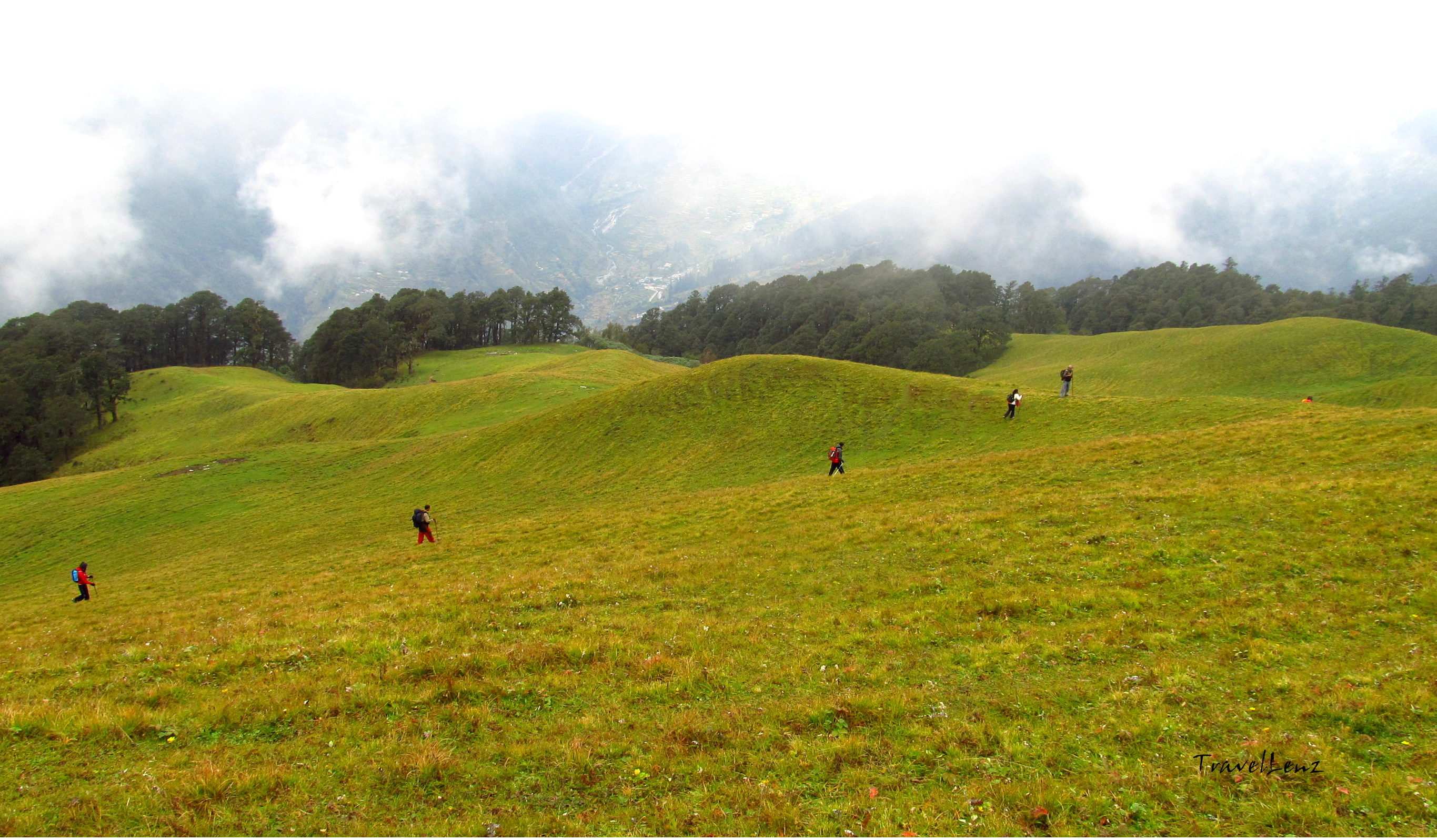 How to reach Roopkund?
How to reach Roopkund?
Lohajung is the basecamp for Roopkund trek. Most trek companies ask you to assemble at Kathgodam or Rishikesh from where they organise transport to Lohajung.
Lohajung is well connected by motorable roads.
- By air – The Jolly Grant Airport in Dehradun is the primary airport in Uttarakhand. Shared taxis are available from Dehradun to Lohajung. You can further take a train, bus or car from Dehradun to reach Kathgodam or Rishikesh.
- By train – You could either take a train from Delhi to Kathgodam. Or opt for trains to Rishikesh. Shared taxis are available from Kathgodam or Rishikesh to Lohajung
- By road –There are overnight buses available directly from Delhi to Kathgodam or Rishikesh. Shared taxis are available from Kathgodam or Rishikesh to Lohajung.
Roopkund was our first high altitude trek in the mighty Himalayas. Over the next few posts, I’ll be sharing our Roopkund Lake Trek Chronicles. Read all about our moments of exultation, our lapses of consciousness, blissful mindfulness, fights with breathlessness, and being one with the precious stillness.
The trek to the mystery lake begins here…..
For the day-wise stories of our Roopkund lake trek click on the highlighted links given on the hover boxes below.
Day 0 - Kathgodam to Lohajung
The 222 km drive from Kathgodam to Lohajung passes through Bhimtal, Bhowali, Kausani, Baijnath, and Dewal before swinging into the little base town of Lohajung.
Day 1 - Lohajung to Didna
The distance from Lohajung to Didna village is around 6.5 km. The trail passes through Bedni Ganga and takes around 4 hours to reach Didna which sits tightly @ 8530 ft.
Day 2 - Didna to Ali Bugyal
The trek from Didna to Ali Bugyal is about 10.5 km and takes around 6 hours. The easy to moderate trail passes through Tol Top, not to mention the beautiful high land meadows of Ali Bugyal @ 11520 ft
Day 3 - Ali Bugyal to Pathar Nachauni
The 5 km trail from Ali Bugyal to Pathar Nachauni is easy. The trek time is around 3.5 hours and cuts across Ghoda Lautani. Pathar Nachauni camp is located at an altitude of 12700 ft.
Day 4 - Pathar Nachauni to Bhagwabasa
The steep ascent from Pathar Nachauni to Bhagwabasa via Kalu Vinayak is one of the toughest legs of the trek. The 5 km trail takes 3.5 hours. Bhagwabasa lies @ 14350 ft.
Day 5 - Roopkund summit
The snowy trek from Bhagwabasa to Roopkund is tricky and steep. But it is all worth the pain as you get to set eyes on the mysterious Roopkund Lake @ 4800 m/15700 ft.
Day 6 - Pathar Nachauni to Lohajung
The trek back from Pathar Nachauni to Lohajung is via Bedni Bugyal, Patal Ghaeroli and Wan. The return journey took 7 hours and 16 km of ground was covered.


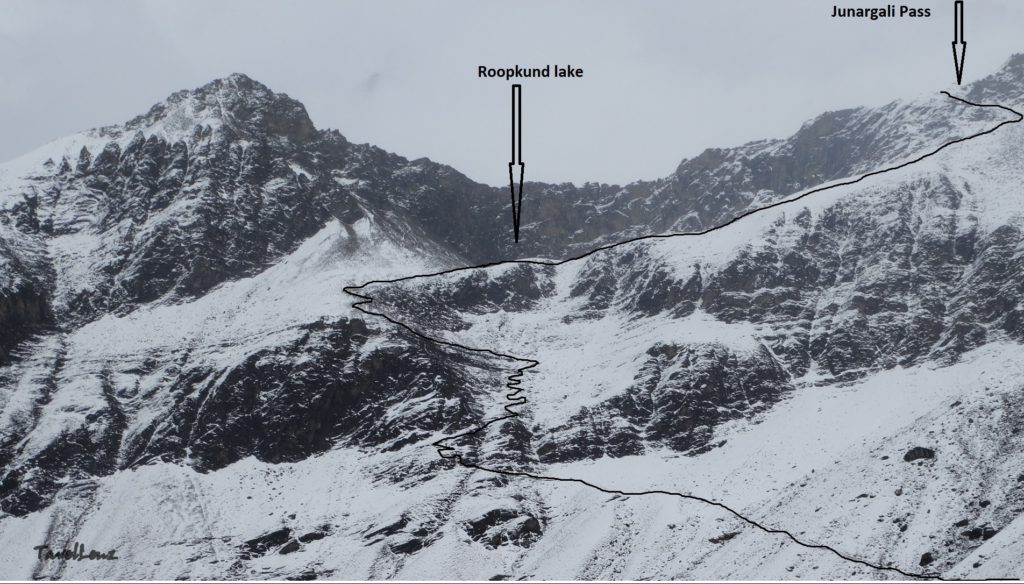
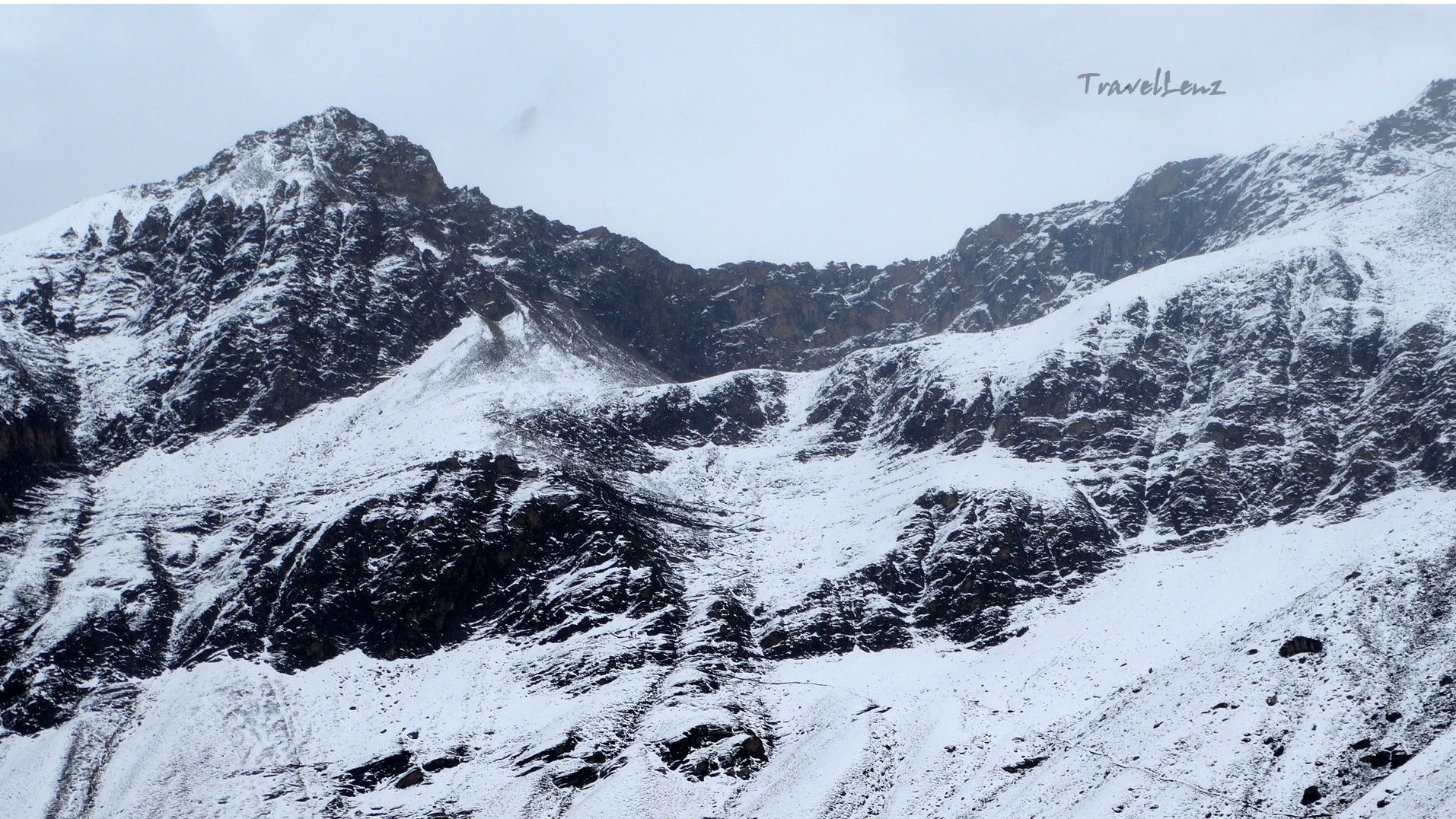
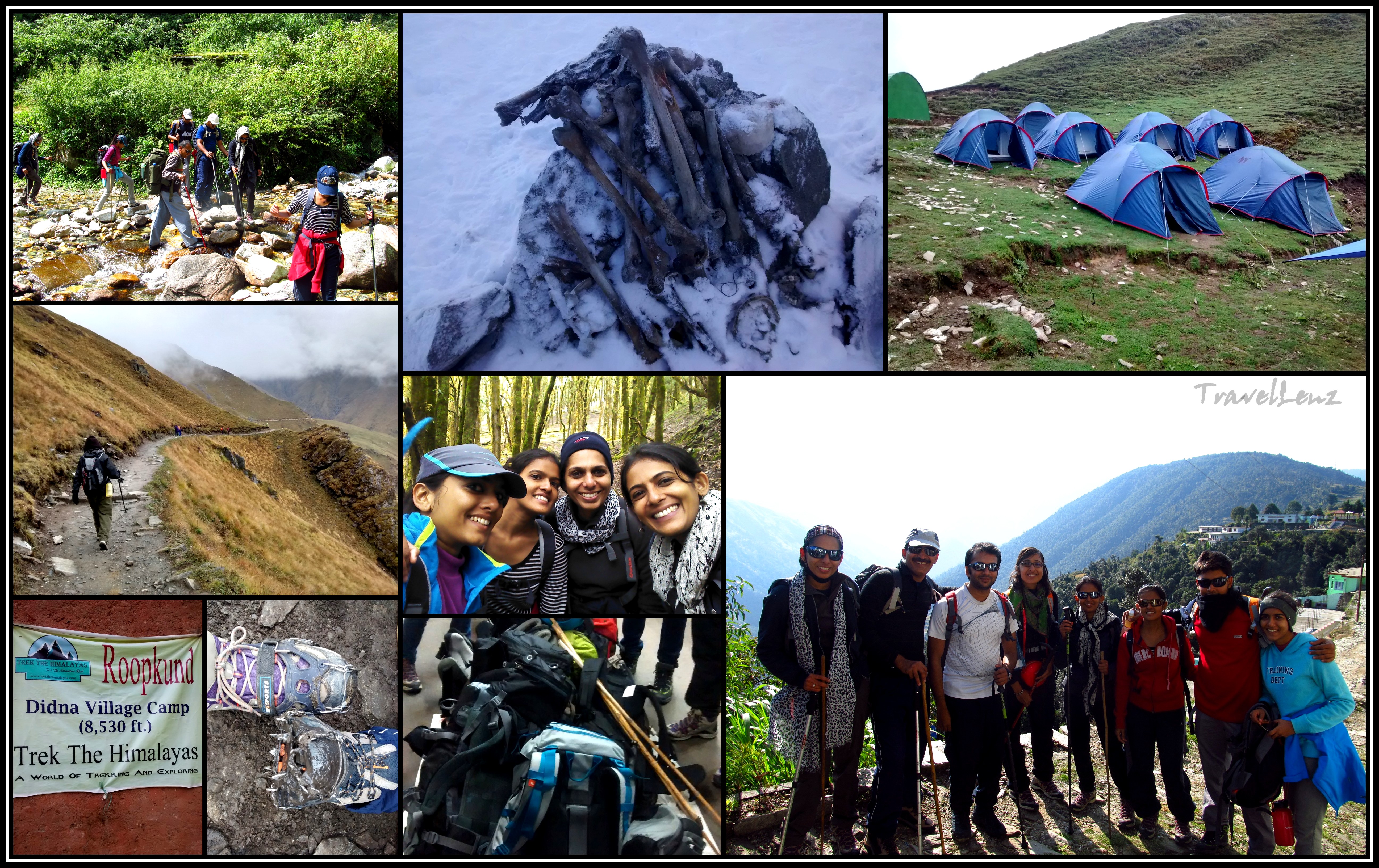
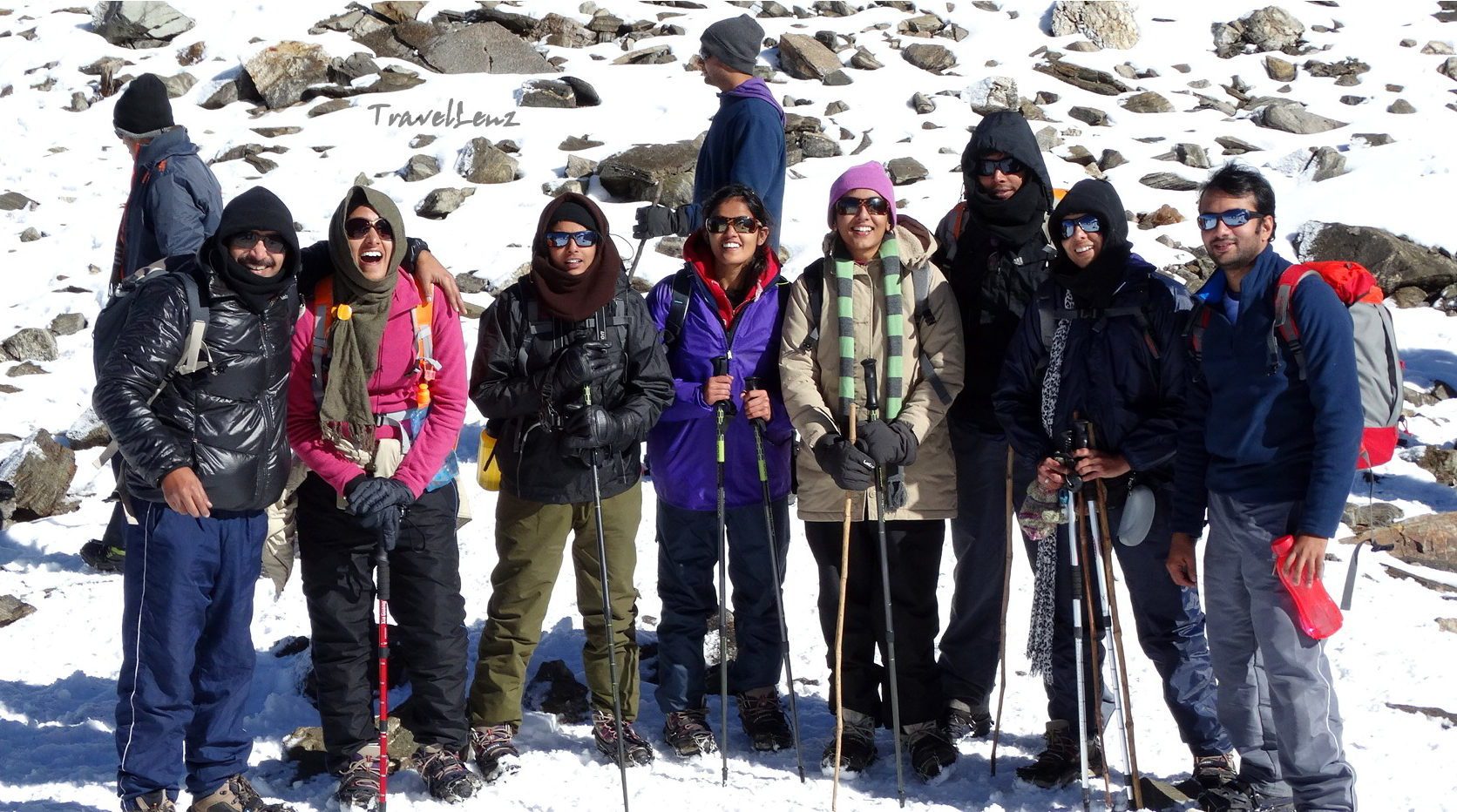


4 Comments
Delightful prologue!
Thanks Niranjan
Oh, finally you are on trek route (to Roop kund).
Hope, the loooooooong wait is over.
Eagerly awaiting to reach at TOP.
Yes finally Alhadji.